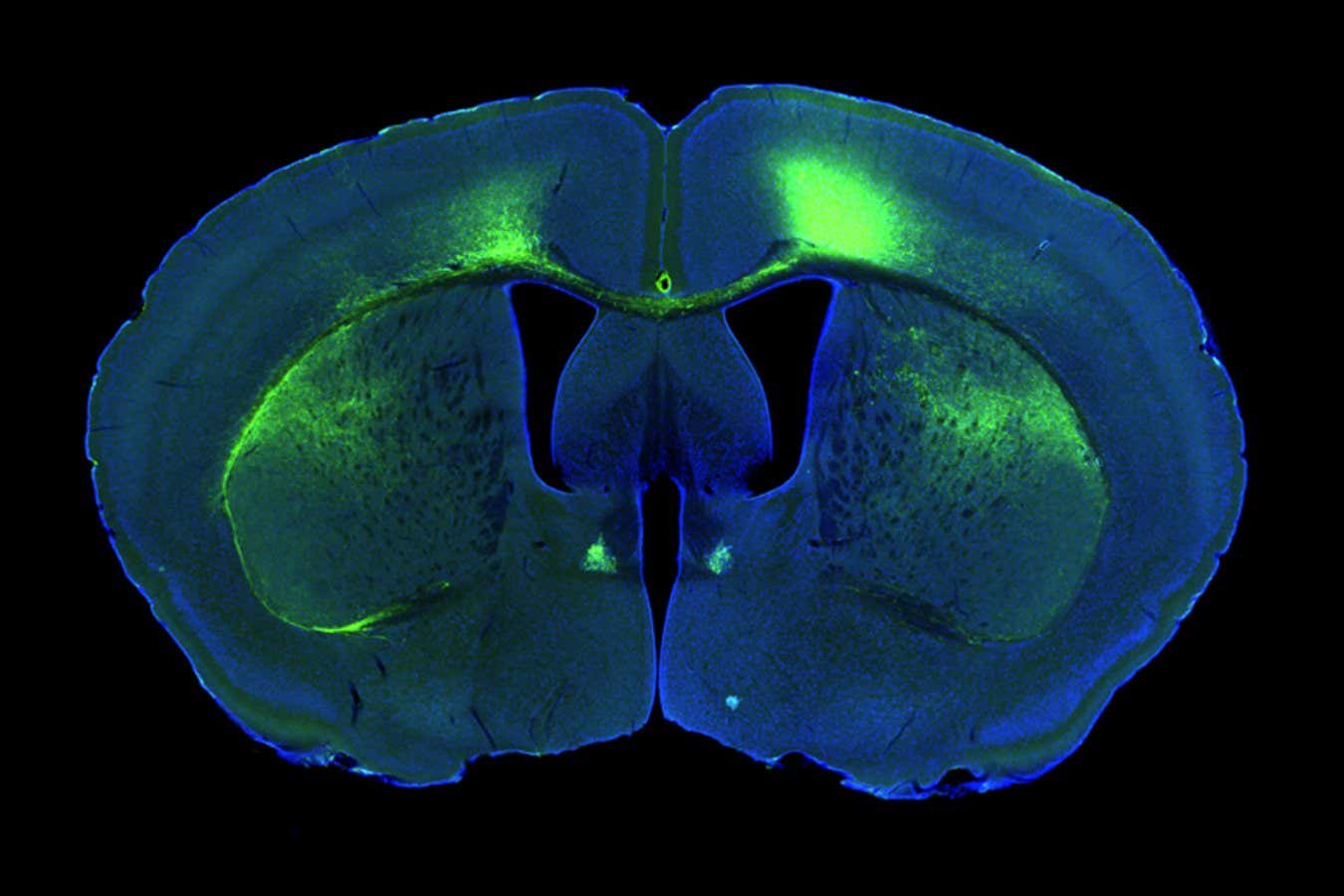An artificial intelligence can interpret a mouse’s brain activity to tell scientists where the animal is located and the direction it is looking
By James Woodford
22 February 2024
A micrograph of a section through a mouse’s brain highlighting neural pathways (green)
MARK AND MARY STEVENS NEUROIMAGING AND INFORMATICS INSTITUTE/SCIENCE PHOTO LIBRARY
Analysing a mouse’s brain activity tells scientists where the animal is located and the exact direction it is looking. With further research, the findings could one day help robots navigate autonomously.
Mammalian brains use two main types of neurons for navigation: “head direction cells” show where an animal is facing and “grid cells” help provide a two-dimensional brain map of where it is located.
To learn more about the firing of these neurons, Vasileios Maroulas at the University of Tennessee, Knoxville, and his colleagues – together with the US Army Research Laboratory – analysed data from a previous study.
Advertisement
Read more
Revealed: What your thoughts look like and how they compare to others’
In this experiment, probes were inserted into several mice’s brains. Data on their neural firing patterns were then paired with video footage showing their locations and head positions as they moved around an open environment.
From this, Maroulas and his colleagues developed an artificial intelligence algorithm that can use neural activity to work out where a mouse is looking and where it is located.
